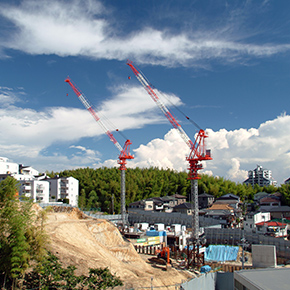-
Previous
User Guide (Automobiles [Logistics and Passenger Transport])

-
Next
User Guide (Ships and Aircraft)

User Guide (Railways)
Highly precise positioning supports safe and efficient train operation
Supports safe and efficient train operation
Railway accidents should absolutely be avoided, so a high degree of safety is required for train operation management. At present, train positions are confirmed when a train passes over a device installed on the ground, and greater efforts are being made to maintain ground devices.
High-precision positioning via QZSS (Michibiki) makes it possible to accurately confirm train positions. Consequently, it is expected that ground facilities can be reduced, and maintenance and management costs can be decreased while still ensuring safety.
More efficient track maintenance work

When inspection trains are operated for track maintenance, it is important to confirm the positions where abnormalities are discovered. High-precision positioning with QZSS (Michibiki) makes it possible to extract these abnormalities in a more efficient fashion.
During regular maintenance work and for early-stage restoration after disasters, when walking on the ground to inspect train tracks it is important to transmit information about the locations of malfunctions. High-precision positioning via QZSS (Michibiki) makes it possible to appropriately deploy workers to sites, which allows for prompt, accurate inspection and repair work.
Improved safety through more advanced driving support
Tracks contain zones with speed limits, such as sharp curves, railroad switches, etc. High-precision positioning via QZSS (Michibiki) makes it possible to accurately identify where trains are being driven. Accordingly, notices can be sent to train operators—such as about appropriate speeds—before the train enters such slowdown zones. This allows for automatic deceleration and improves safety.






